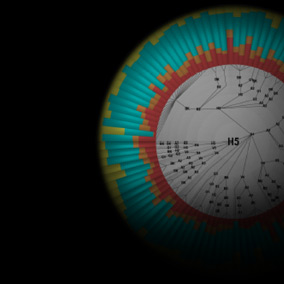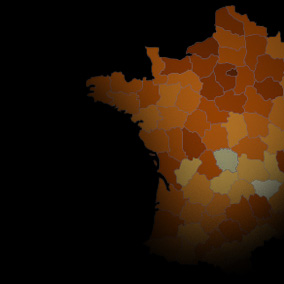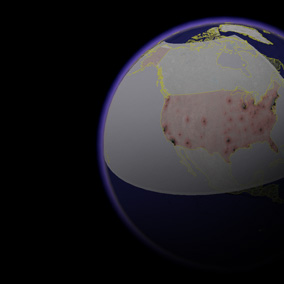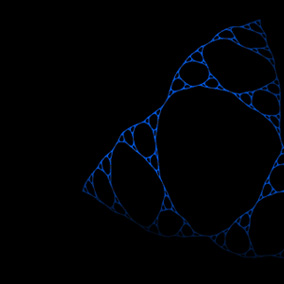Call for Participation » InfoVis Contest
The contest participation category was introduced in 2003. The goal of the contest is to promote the development of benchmarks for information visualization, establish a forum to promote evaluation methods, and create an interesting event at the conference.
Contest entries are submitted as a two (2) page summary, a video and accompanying materials. All accepted entry materials will be made available online after the conference. At least one author of an accepted entry must attend the conference to present the work. Authors of first place entries will receive a prize and present their work during the main contest session. All entries will present their work during the poster session, and also through a brief summary of their work.
This year's data records the activity of the people on two floors of an office building over the course of about one year. We are interested in their daily activities, external influences on their routines, and unusual patterns of behavior.
- Patterns. What daily, weekly, or monthly patterns can you identify? For example is there more activity at the beginning or the end of the week? Are there slower and more active times? Were there days with important deadlines where people started to stay longer than usual?
- Elevators vs. stairs. Do people use elevators or stairs to go between the two floors? Are there interesting or unexpected patterns with respect to stair usage?
- Weather and Daylight Savings Time. Does the weather change when people come into the office, where they congregate, etc.? How long does it take people to get get back to their old routines after the switch to or from daylight savings time?
- Smoking breaks. Can you detect the smokers that go outside for a few minutes and then return?
- Unusual behavior. What patterns can you find that are different than what you expected or what you see in the data as typical behavior?
Your submissions will be evaluated based on the interesting tidbits you find and the stories you can tell based on the data. Explore, and then explain, the patterns hidden in the data. Be creative! Think about the data from different functional viewpoints: as a supervisor, as a maintenance person, as a security coordinator, etc.
The data can be found here. It has been kindly provided by Yuri Ivanov and Chris Wren of MERL.
Details on submission format and process will follow soon.
» Important DatesSubmission Deadline: July 11, 2008.
» Cochairs
Eleanor Chlan, Johns Hopkins University
Robert Kosara,University of North Carolina, Charlotte
Bongshin Lee, Microsoft Research
Jing Yang, University of North Carolina, Charlotte







 Week-at-a-Glance
Week-at-a-Glance

